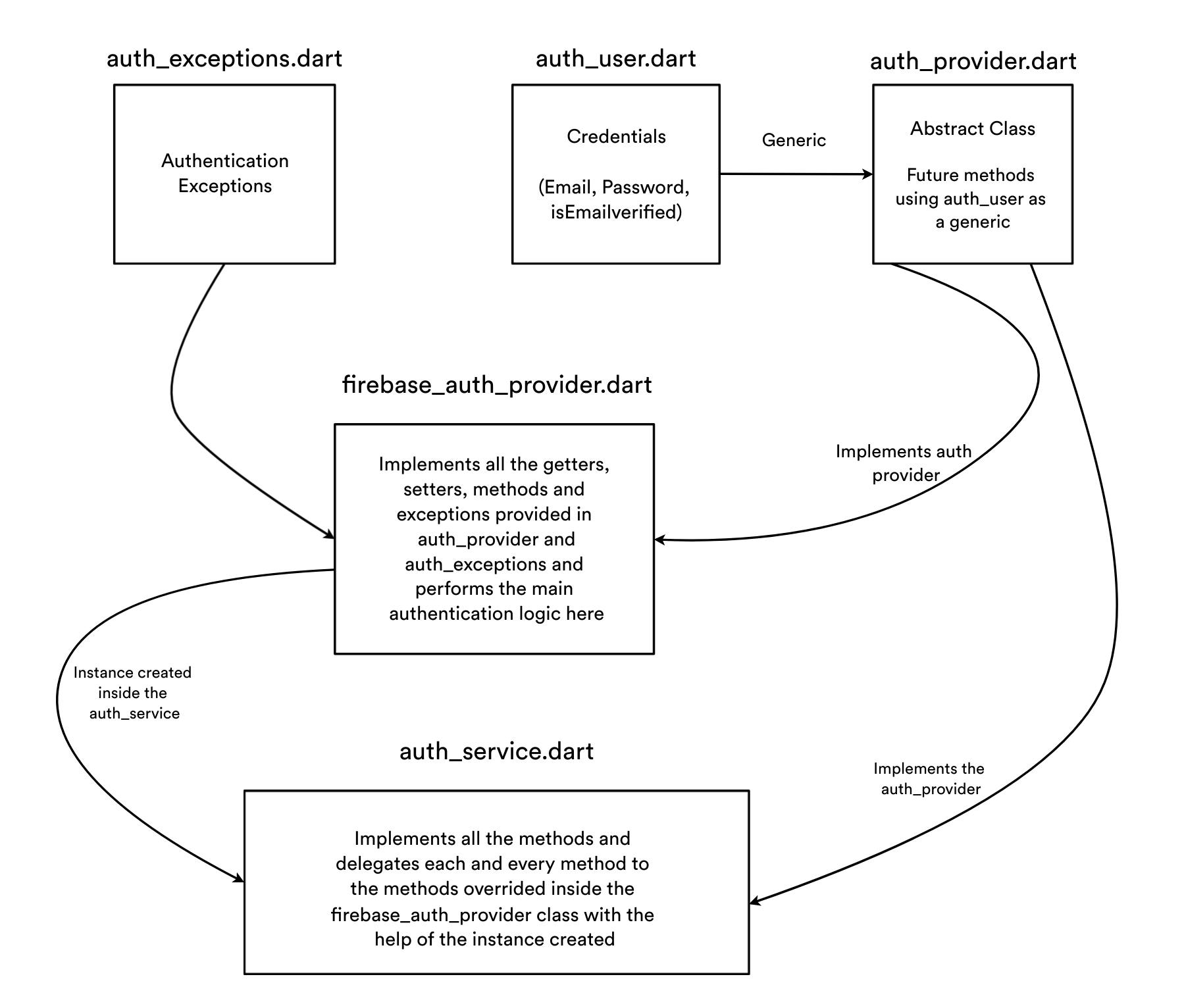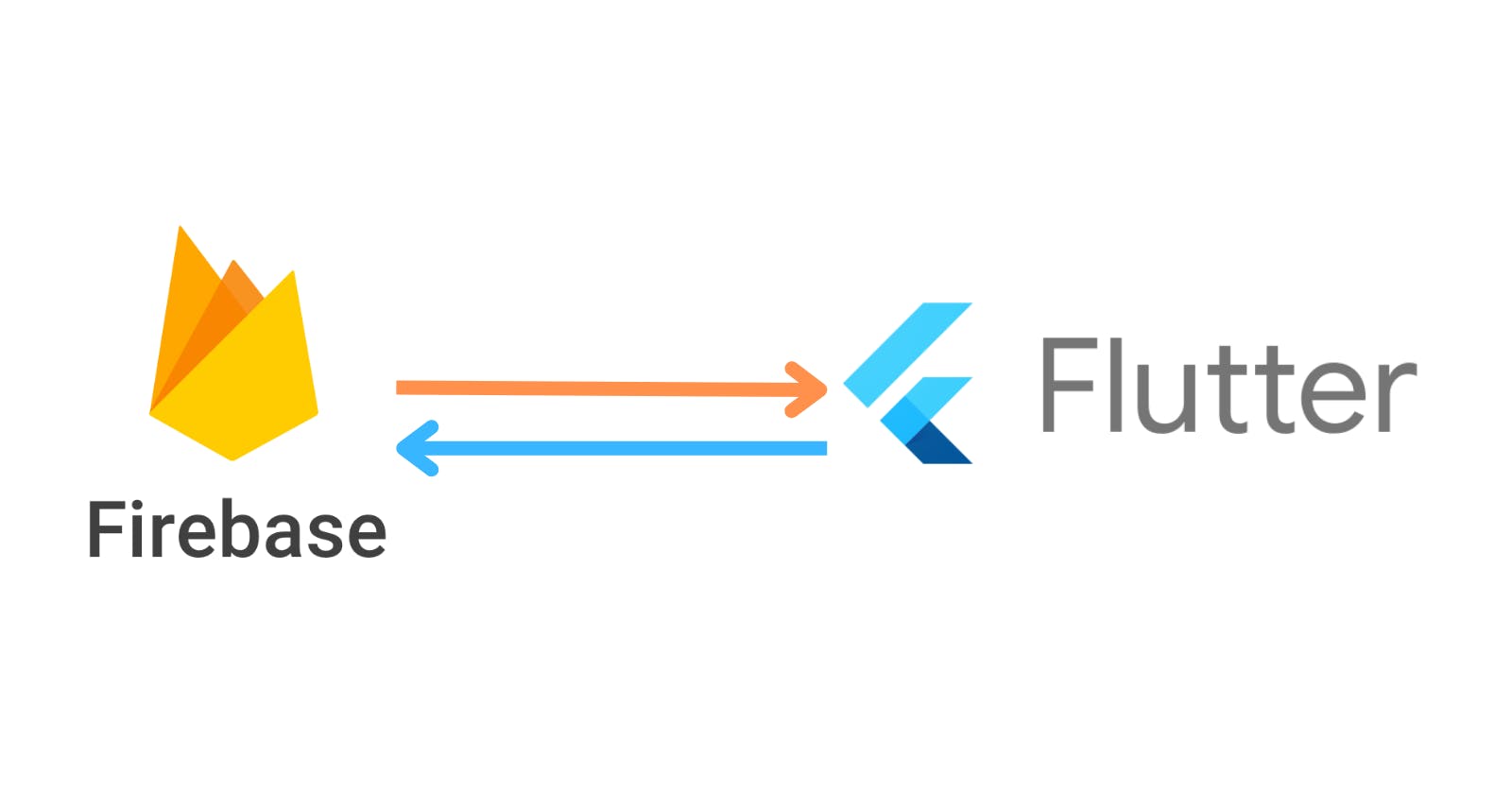Unit testing in flutter & Separate authentication layer in flutter to provide security
Introduction
Hey everyone in this blog I'm going to explain you what is unit testing in flutter and how to separate the authentication logic in flutter to provide extra security to your flutter code
Starting off with the first topic:
What is unit testing in flutter and how it is useful ?
We all have seen some cases that when we deploy any version of our application, we usually perform some manual tests in our application to see that each and every functionality should be working perfectly, otherwise if we have not tested and directly deployed it, it will perform crashes in the end user's device.
Unit testing is way to ensure that your app can continue to work even if you add more changes and features to the existing functionality inside your application. Unit tests are very handy for verifying the behavior of a single function, method or a class etc.
For writing unit tests in flutter, it provides the test package which is the core framework for writing unit tests in flutter.
Why is it necessary to separate auth layer from the main Ui in flutter ?
When we are integrating firebase with our flutter application we have to initialize firebase to its current platform so that whenever we run our application we can do authentication and connect to our database.
But do we have to do it inside our main files which are going to be displayed to the end user ? absolutely not, If we are integrating the functionalities directly onto to the main Ui some phishers can directly access the credentials which we are taking from the user, whether it can be email, password etc. So its all dirty code.
So it is necessary to separate the authentication layer so it can not be directly integrated inside our main application
How to separate the authentication layer in flutter ?
As of now we've discussed about the need to separate the authentication layer from the main Ui in flutter, Let's implement it practically
The files which we are going to need to separate the code will be as follows
An
auth_exceptions.dartfile which will include all the necessary exception which we will throw when an error will generate.An
auth_user.dartfile which will include all the necessary credentials of a user, but for as of now we will only initialize a Boolean inside theauth_userwhich will beisEmailVerifiedThe next file will be
auth_provider.dart. It will be an abstract class and it will contain all the necessary methods, getters and setters. Theauth_providerwill contain future methods which will contain theauth_useras a generic. In the end we are performing authentication with the users soauth_userwill be used as a generic.The next file will be the main root file for our authentication, which is the
firebase_auth_provider.dartthis file will implement all the methods, gettter & setters defined inside theauth_provider.dartfileAnd in the end we will have a
auth_services.dartfile which will implement all methods and getters defined inside theauth_provider.dartfile and it will also initialize an instance ofauth_providerclass.
So all the file which we've made will be interconnected like this,

Now that we've discussed about how each and every file will function as per our need, Lets implement those files in code.
(i) auth_exceptions.dart
// login exceptions
class UserNotFoundException implements Exception {}
class WrongPasswordException implements Exception {}
// Register exceptions
class WeakPasswordException implements Exception {}
class EmailAlreadyInUse implements Exception {}
class InvalidEmailException implements Exception {}
// Generic exception
class GenericException implements Exception {}
class UserNotLoggedIn implements Exception {}
In the exceptions file we've separated each and every exceptions as per their use cases and each and every file implements the class exception.
(ii) auth_user.dart
import 'package:firebase_auth/firebase_auth.dart';
class AuthUser {
// ignore: prefer_typing_uninitialized_variables
final isEmailVerified;
const AuthUser({required this.isEmailVerified});
factory AuthUser.fromFirebase(User user){
return AuthUser(isEmailVerified: user.emailVerified);
}
}
In the AuthUser we've used the concept of factory construtor So that we don't have to instantiate a new instance of our class
Currently our class is only instantiating isEmailVerified variable inside its construtor and it is using the User class from the firebase_auth class of firebase. It will assign true or false to the isEmailVerified variable
(iii) auth_provider.dart
import 'package:todoapp/services/auth/auth_user.dart';
abstract class AuthProvider{
Future<void> initialize();
AuthUser? get currentUser;
Future<AuthUser> login({
required String email,
required String password,
});
Future<AuthUser> createUser({
required String email,
required String password,
});
Future<void> logout();
Future<void> sendEmailVerification();
}
In this file we've provided the AuthUser as a generic to all the future methods except the initialize method as it will be used to initialize the connection to firebase and it has nothing to do with our user, And we've provided AuthUser as a generic to the createUser and login methods as they are going to interact directly with our user. The rest is the sendEmailverification method which is used to send verification email to the user to verify them, and the last is the logout and a getter which is used to get the currentUser and logout is used to log the user out of the application back to the login screen.
(iv) firebase_auth_provider.dart
import 'package:todoapp/firebase_options.dart';
import 'package:todoapp/services/auth/auth_provider.dart';
import 'package:todoapp/services/auth/auth_exceptions.dart';
import 'package:firebase_core/firebase_core.dart';
import 'package:todoapp/services/auth/auth_user.dart';
import 'package:firebase_auth/firebase_auth.dart';
class FirebaseAuthenticationProvider implements AuthProvider{
@override
Future<void> initialize() async {
await Firebase.initializeApp(
options: DefaultFirebaseOptions.currentPlatform
);
}
@override
Future<AuthUser> createUser({required String email, required String password}) async {
try{
await FirebaseAuth.instance.createUserWithEmailAndPassword(email: email, password: password);
final user = currentUser;
if(user!=null){
return user;
}
else{
throw UserNotLoggedIn();
}
}
on FirebaseAuthException catch(e){
if (e.code == 'weak-password') {
throw WeakPasswordException();
} else if (e.code == 'email-already-in-use') {
throw EmailAlreadyInUse();
} else if (e.code == 'invalid-email') {
throw InvalidEmailException();
} else {
throw GenericException();
}
}
catch(e){
throw GenericException();
}
}
@override
AuthUser? get currentUser{
final user = FirebaseAuth.instance.currentUser;
if(user != null){
return AuthUser.fromFirebase(user);
}
else{
return null;
}
}
@override
Future<AuthUser> login({required String email, required String password}) async {
try {
await FirebaseAuth.instance.signInWithEmailAndPassword(email: email, password: password);
final user = currentUser;
if(user!=null){
return user;
}
else{
throw UserNotLoggedIn();
}
} on FirebaseAuthException catch(e){
if (e.code == 'user-not-found') {
throw UserNotFoundException();
} else if (e.code == 'wrong-password') {
throw WrongPasswordException();
} else {
throw GenericException();
}
}
catch(e){
throw GenericException();
}
}
@override
Future<void> logout() async{
final user = FirebaseAuth.instance.currentUser;
if(user != null){
await FirebaseAuth.instance.signOut();
}
else{
throw UserNotLoggedIn();
}
}
@override
Future<void> sendEmailVerification() async {
final user = FirebaseAuth.instance.currentUser;
if(user!=null){
await user.sendEmailVerification();
}
else{
throw UserNotLoggedIn();
}
}
}
In this file we've imported each and every file we've created till now and implemented the Auth provider with this class and overridden all of its method inside this class.
This file contains the core logic of how the register screen will perform, how the login screen will perform and so on.. We've also thrown exception at each and every error that can occur while working with firebase.
(v). auth_service.dart
import 'package:todoapp/services/auth/auth_provider.dart';
import '../auth/auth_user.dart';
import './firebase_authentication_provider.dart';
class AuthService implements AuthProvider{
final AuthProvider provider;
const AuthService(this.provider);
factory AuthService.firebase() => AuthService(FirebaseAuthenticationProvider());
@override
Future<AuthUser> createUser({required String email, required String password}) =>
provider.createUser(email: email, password: password);
@override
AuthUser? get currentUser => provider.currentUser;
@override
Future<void> initialize() => provider.initialize();
@override
Future<AuthUser> login({required String email, required String password}) => provider.login(email: email, password: password);
@override
Future<void> logout() => provider.logout();
@override
Future<void> sendEmailVerification() => provider.sendEmailVerification();
}
In this class we've delegated each and every method of auth_provider directly to the firebase_auth_provider. Firstly we've implemented the Auth provider class and then instantiated and instance of it, after then we've override all the methods and delegated each one of them toward the firebase_auth_provider methods
We've also used a factory constructor over here to call the firebase authentication provider class every time we call the AuthService.firebas() method.
Now that we know how to provide abstraction to the firebase authentication methods, Let's now implement them in our main files
Here I am sharing a login file which I've created for my project implementing all the Authservice methods
import 'dart:developer';
import 'package:flutter/material.dart';
import 'package:todoapp/constants/routes.dart';
import 'package:todoapp/services/auth/auth_exceptions.dart';
import 'package:todoapp/services/auth/auth_services.dart';
import 'package:todoapp/services/auth/auth_user.dart';
import 'package:todoapp/views/notes_view.dart';
import '../firebase_options.dart';
import 'package:todoapp/services/auth/firebase_authentication_provider.dart';
class loginView extends StatefulWidget {
const loginView({Key? key}) : super(key: key);
@override
State<loginView> createState() => _loginViewState();
}
class _loginViewState extends State<loginView> {
late final TextEditingController _email;
late final TextEditingController _password;
@override
void initState() {
_email = TextEditingController();
_password = TextEditingController();
super.initState();
}
@override
void dispose() {
_email.dispose();
_password.dispose();
super.dispose();
}
@override
Widget build(BuildContext context) {
return Scaffold(
appBar: AppBar(
title: const Text('Welcome to Todoist'),
),
// ignore: avoid_unnecessary_containers
body:Container(
margin: EdgeInsets.only(top: 20, left: 10, right: 10),
alignment: Alignment.center,
width: 500,
height: 320,
decoration: BoxDecoration(color: Color.fromARGB(255, 130, 126, 127), borderRadius: BorderRadius.circular(10) ),
padding: EdgeInsets.all(15),
child: Column(
children: [
Container(
margin: EdgeInsets.only(bottom: 20),
child: const Text('Log into todoist',
style: TextStyle(
fontSize: 30,
color: Colors.white,
),
),
),
Container(
width: 510,
alignment: Alignment.center,
height: 50,
decoration: BoxDecoration(
color: Colors.white,
border: Border.all(color: Colors.transparent),
borderRadius: BorderRadius.circular(10)
),
child:TextField(
controller: _email,
autocorrect: false,
keyboardType: TextInputType.emailAddress,
decoration: InputDecoration(hintText: ' Enter Your Email Here', border: InputBorder.none),
),
),
Container(
margin: EdgeInsets.only(top: 10),
width: 500,
height: 50,
decoration: BoxDecoration(
border: Border.all(color: Colors.transparent),
borderRadius: BorderRadius.circular(10),
color: Color.fromARGB(255, 255, 255, 255)
),
padding: EdgeInsets.only(bottom: 10),
child: TextField(
controller: _password,
autocorrect: false,
obscureText: true,
keyboardType: TextInputType.visiblePassword,
decoration: InputDecoration(hintText: ' Enter Your Password Here', border: InputBorder.none),
),
),
SizedBox(
width: 200,
child: Container(
margin: EdgeInsets.only(top: 20),
child: Column(
children: [
TextButton(
onPressed: () async {
await AuthService.firebase().initialize();
final email = _email.text;
final password = _password.text;
try
{
await AuthService.firebase().login(email: email, password: password);
final user = await AuthService.firebase().currentUser;
if(user?.isEmailVerified){
Navigator.of(context).pushNamedAndRemoveUntil(notesRoute, (route) => false);
}
else{
await AuthService.firebase().sendEmailVerification();
final snack = SnackBar(
content: const Text("We've sent you a verification email"),
action: SnackBarAction(label: 'close', onPressed: (){}),
);
ScaffoldMessenger.of(context).showSnackBar(snack);
}
}
on UserNotFoundException {
await showErrorDialog(context, 'User not found');
}
on WrongPasswordException {
await showErrorDialog(context, 'Password Incorrect');
}
on InvalidEmailException {
await showErrorDialog(context, 'Invalid Email');
}
on GenericException {
await showErrorDialog(context, 'Authentication Error');
}
},
child: const Text('Login', style: TextStyle(fontSize: 20)),
style: TextButton.styleFrom(backgroundColor: Color.fromARGB(255, 236, 234, 234)),
),
TextButton(onPressed: () {
Navigator.of(context).pushNamedAndRemoveUntil(registerRoute, (route) => false);
},
child: const Text('Not registered ?, Click here'),
style: TextButton.styleFrom(backgroundColor: const Color.fromARGB(255, 236, 234, 234)),
),
],
),
),
),
],
),
),
);
}
}
You can clearly see that we've completely abstracted the authentication layer from our main UI.
Let's move towards unit testing
Performing unit tests
For performing unit tests in flutter we will need a package named test and it will provide necessary methods to write the test
Install the test package from CLI,
flutter pub add test --dev
After installing the test make a new file inside the test folder named auth_test.dart
We are generally going to perform only 2 tests for now, but you provide as many tests as you want
Create a main function inside the auth_test.dart file
void main()
{
// tests
}
After then create a MockAuthUser class outside the main function and create a method inside it,
import 'package:flutter_test/flutter_test.dart';
import 'package:todoapp/services/auth/auth_exceptions.dart';
import 'package:todoapp/services/auth/auth_provider.dart';
import 'package:todoapp/services/auth/auth_user.dart';
class MockAuthProvider
{
AuthUser? _user;
bool _isInitialized = false;
bool get isInitialized => _isInitialized;
Future<void> initialize() async {
await Future.delayed(const Duration(seconds: 2));
_isInitialized = true;
}
Then create a group inside the main method and create and instance of MockAuthProvider and start performing the tests
group('Mock Authentication', () {
final provider = MockAuthProvider();
test('Should not be initialized to begin with', () {
expect(provider._isInitialized, false);
});
test('Should be able to initialize', () async {
await provider.initialize();
expect(provider.isInitialized, true);
});
});
Here I've not provided any logic while performing the tests, The above code is just for explanation that how we can perform tests
After providing the tests save the file and run it using the
flutter test test/auth_test.dart command
The command will take some time and it will show a summary to you you that how many tests were passed and how many were failed with the errors happened during the testing phase
Conclusion
I hope you've now understood what is unit testing and how to provide tests and separate the auth layer from flutter and make it abstract, If you have any doubts feel free to reach me out on Twitter & Showwcase 😀

